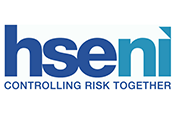Health and safety risk assessment
Record your safety risk assessment findings and implement them
It is important to accurately record the findings of your risk assessment. If you have fewer than five employees you don't have to write anything down. However, it is useful so that you can review it at a later date, if for example something changes.
An easy way to record your findings is to download and use the risk assessment template (PDF, 22KB). This template also includes a section for your health and safety policy so you can record everything in one place.
When writing down your results, keep it simple. For example:
- 'Tripping over rubbish: bins provided, staff instructed, weekly housekeeping checks'
- 'Fume from welding: local exhaust ventilation used and regularly checked'
A risk assessment does not need to be perfect, but it must be 'suitable and sufficient'. The example risk assessments on the Health and Safety Executive website will give you an idea of what your risk assessment should look like.
What your records should include
It should show that:
- a proper check was made
- you asked who might be affected
- you dealt with all the obvious significant hazards, taking into account the number of people who could be involved
- the precautions are reasonable, and the remaining risk is low
- you involved your staff or their representatives in the process
Create an action plan
If, like many businesses, you find that there are quite a lot of improvements that you could make, big and small, don't try to do everything at once. Make a plan of action to deal with the most important things first.
A good plan of action often includes a mixture of different things such as:
- a few cheap or easy improvements that can be done quickly, perhaps as a temporary solution until more reliable controls are in place
- long-term solutions to those risks most likely to cause accidents or ill health
- long-term solutions to those risks with the worst potential consequences
- arrangements for training employees on the main risks that remain and how they are to be controlled
- regular checks to make sure that the control measures stay in place
- clear responsibilities - who will lead on what action and by when
Remember, prioritise and tackle the most important things first.
- HSENI Helpline0800 032 0121
